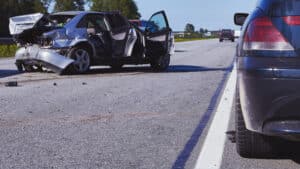Written By Chris Dolan and Cioffi Remmer
This week’s question comes from Leo from San Francisco, who asks: Now that self-driving cars are becoming a reality, who bears the responsibility for collisions involving driverless vehicles? Are there any laws protecting citizens?
Dear Leo,
Driverless cars, indeed, are becoming a reality. Over the last few years, self-driving vehicles have surged to the forefront of technological innovation, promising to revolutionize how we commute and interact with transportation. Driverless vehicles have undergone significant advancements in testing and production using artificial intelligence (AI), sensor technologies, and cutting-edge computing power. Major automotive industry giants and startups have been competing to bring this transformative technology to the masses, with the Bay Area leading the way.
For example, when companies like Waymo and Cruise test out their driverless taxis on city streets, the question that almost always comes up is, “Who is responsible for collisions involving driverless vehicles?”
Autonomous or driverless vehicles are supposed to have the advantage of obeying all road laws, having more reaction time, and the ability to avoid collisions. However, as of July 10, 2023, the California DMV had received 623 Autonomous Vehicle Collision Reports.
It is usually the case that technology outpaces legislation. Our legislatures have plenty of time to develop common sense rules and regulations for issues that foreseeably cause public tension. Health and safety are at the heart of most rules and regulations that govern technology and its interactions with the public. This concern would be tenfold in the case of thousand-pound motor vehicles without human control. Currently, in California, Autonomous Vehicles (driverless) are only allowed on public roads for testing purposes.
The California legislature has attempted to codify some essential regulations for testing driverless vehicles, codified in the California Vehicle Code Section 38750. Imagine a scenario where an autonomous vehicle (AV) collides with another vehicle or pedestrian. What would they require under California law?
- A properly licensed individual must operate the AV. That means there should be a person in the vehicle with a valid driver’s license or a remote operator who monitors the vehicle live if no driver is physically present. That operator must also have a proper, valid driver’s license.
- The manufacturer of the AV is required to have a testing permit and insurance in the amount of five million dollars ($5,000,000), of which proof thereof is to be maintained in the vehicle.
- A plan with law enforcement agencies and first responders on interacting with the vehicle in emergency and traffic enforcement situations, which includes, but is not limited to, instructions on:
- How to communicate with the remote operator (who must always be available);
- Where in the vehicle is the proof of registration and proof of insurance;
- How to safely remove the vehicle from the roadway;
- How to disengage autonomous mode.
- Once law enforcement arrives, they must follow their plan to interact with Autonomous Vehicles. For example, the San Francisco Police Department has a current directive on interacting with autonomous vehicles. SFPD is required to document both injury and non-injury crashes involving an AV, whether physically operated or remotely monitored, using the CHP555 collision report, which they forward to the Commercial Vehicle Unit.
- Within ten (10) days of the collision, whether it resulted in damage of property or bodily injury or death, the manufacturer must also report the incident to the Department of Motor Vehicles after the collision.
Ultimately, who is responsible? Like any roadway collision, this is usually determined by figuring out who is at fault. One of the advantages of AVs is that there is audio and video recording at all times, and usually electronic data or telemetry. But determining fault may or may not be as simple as reviewing video or looking at electronic data. In either case, the manufacturer would likely submit the claim to their insurance carrier. If you’re involved in a collision with a driverless vehicle, it is critical to report it to law enforcement and your vehicle insurance carrier. If you’ve been injured in the collision, contact an attorney to help determine your rights.










